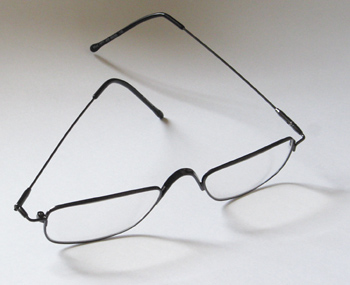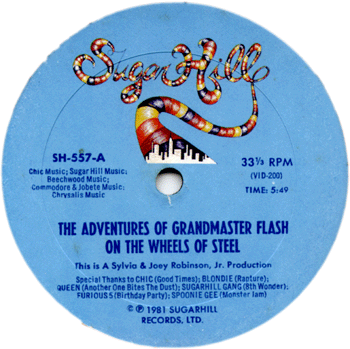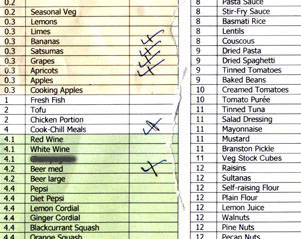New photos – Longleat
 I’m working my way back through unpublished photos — highlights from our trips to the Longleat estate and Centerparcs are now in the photo library.
I’m working my way back through unpublished photos — highlights from our trips to the Longleat estate and Centerparcs are now in the photo library.
 I’m working my way back through unpublished photos — highlights from our trips to the Longleat estate and Centerparcs are now in the photo library.
I’m working my way back through unpublished photos — highlights from our trips to the Longleat estate and Centerparcs are now in the photo library.
 A few years back, when we took Clara for a new pair of specs, she persuaded me to get my eyes tested. She was tired of watching me squint at the small print, and, in the unselfconcious way of small children, suggested the obvious remedy. Duncan, a wise and experienced South African optician, put me through my paces. “You’ve always been a bit long-sighted” was his verdict “and as you get older that only gets worse. However I don’t think you need any help yet. Come back and see me when you’re 41 and a half. You’ll be needing glasses then.”
A few years back, when we took Clara for a new pair of specs, she persuaded me to get my eyes tested. She was tired of watching me squint at the small print, and, in the unselfconcious way of small children, suggested the obvious remedy. Duncan, a wise and experienced South African optician, put me through my paces. “You’ve always been a bit long-sighted” was his verdict “and as you get older that only gets worse. However I don’t think you need any help yet. Come back and see me when you’re 41 and a half. You’ll be needing glasses then.”
And lo, it came to pass, as my 41st birthday came and went, I found myself increasingly carrying papers to read them in bright window light. At the end of a long day at the computer, words started to swim. The final humiliation was when a nice young man came to the door to sign me up for a local wildlife charity, and I had to ask him to read the bank’s address from my cheque book. On my forty-first-and-a-half, almost to the day, I succumbed and ordered my first reading spectacles.
Everyone tells me that they are not at all strong: +1/+1.5. But I’m shocked and amazed at the icy sharpness that has come into my life. I’ve been driving with an empty wash-bottle, the windscreen splattered with the debris of 41 and a half years of Kamikaze insects, and a youth in a parka has stepped out at the lights with a squeegee and soapy water. Actually, my saviour wasn’t a youth in a parka, it was a bottle-blond in a crisp white tunic, of which there are now four at the opticians. They seem to think that suits the aesthetic. Duncan is no more to be seen. Perhaps they told him he would no longer be welcome once he reached 51 and a half.
This evening I will begin publishing a series of articles written by my Dad, Tony Jordan, a history of the Gallipoli campaign of 1915. It’s a very personal account: Dad’s father miraculously survived one of the bloodiest landings of this initiative, unlike the majority of his companions, who were mown down in minutes. The tale of intertwined lives is as fascinating as it is horrific: Churchill, the architect of the botched mission; Robert Jordan, a foot-soldier in the Royal Munster Fusiliers; and a young officer named Nightingale, the uncomfortable interface between Whitehall’s strategy and the grim reality of a Turkish beach.
I’m very grateful to my Dad for writing this and for allowing me to read and publish it, and also to my old history teacher Chris Holland, for giving Dad the impetus to turn decades of study into a finished article.
 “A record made from nothing but other records'” writes Frank Broughton on his djhistory.com site. The innovations that this record introduced have become so commonplace that it almost sounds clichéd: the Good Times riff, the scratching and ‘found’ recordings. But try to imagine this crackling from the speakers in 1981. This is where it started baby-boy!
“A record made from nothing but other records'” writes Frank Broughton on his djhistory.com site. The innovations that this record introduced have become so commonplace that it almost sounds clichéd: the Good Times riff, the scratching and ‘found’ recordings. But try to imagine this crackling from the speakers in 1981. This is where it started baby-boy!
We were used to dancing the simple, knees-bend, white-boy skank of Two-Tone, and along comes this record where half the music isn’t there at all. Eventually, you discovered you could dance through the breaks. The beat (ahem) goes on.
I’ve always believed the “Why don’t you tell me a story'” section comes from a Danny Kaye film, but scouring the Internet I find no justification for this belief. Answers on a post-card, please.
Finally, this record is a tribute to John Peel, inevitably the only person who would play it on the radio. Like so many other landmark records of that period, it was featured nightly over a period of a week or two, mingled with boring bands from Belgium, until it got so deep into you, you just had to go out and buy it. After John died I was limp with grief for weeks.
The Adventures of Grandmaster Flash on the Wheels of Steel. Buy it here
If you own the copyright for this track and would like me to remove it, please drop us a line, and I’ll remove it right away.
A hoarder, me; I have a cupboard filled with about 500 LPs and probably an equal number of 7″ and 12″ singles. Caroline is constantly telling me they are an anchor, mooring us in the dock of clutter. And I sympathise. I loved a story I read the other day on a Zen Buddhist site, about the man who limits himself to 600 possessions — each time he receives a gift or acquires something new, he selects an item to give away.
As pleasing as this idea is, I cling to my vinyl like a comfort blanket. Belying the rock journo cliché that pop music is “disposable”, this stuff is no more disposable than a family photo album. Though I get shirty with those guests on Desert Island Discs, whose collections seem to represent only memories — as if what’s in the grooves counted for nothing — it’s undeniable that these records are stamped with their context: favourite record shops, pocket money and student grants, bargain bins, favourable reviews in the NME or radio plays.
[As I write, I’m conscious this talk of grooves and record shops casts me in the archaic mould of my grandparents with their wireless and stereogram, but bear with me young reader; you’ll be here sooner than you think, with your cherished memories of the shiny silver disc!]
The last LP I bought was Neil Young’s Freedom, and the first CDs included Kate Bush – The Sensual World and Rei Momo by David Byrne. So we must have graduated to CD around October ’89. A strange boy, I moved backward through recorded history as easily as forward, and so reckon my earliest is a November 1933 release of Your Mother’s Son-In-Law by Billie Holiday. A fifty-odd year slice of recorded music.
Inspired by the lovely Eclectic Boogaloo I have resolved to sweat this asset. J-M.org will unleash choice cuts into the blogosphere under the usual ethical-if-not-quite-legal guidelines. If you like the music, buy it (unless it’s deleted, in which case tough luck mr. music mogul). MP3s will be removed after a limited airing of a week or two.
And the most delightful part of this plan is that it allows me to use a cheesy pun. Welcome to The Vinyl Countdown. Now read on…
Yes, at long last, I have completed editing our holiday photographs from South Africa (that’s right, our holiday in October/November last year!) You can view them here.
If you’re reading this, there’s a good chance that our migration to a new web host has completed successfully. Though not without incident. I clumsily deleted all articles during the transition, and had to reconstitute from various bits of backup, here, there and everywhere. For a while our About page pointed to a story about Space Aliens, curiously appropriate especially after an all-night session to repair the mess I’d created. If I were Jerry Pournelle of Computing at Chaos Manor fame, I’d tell you all the gory details, but I’m not, so I won’t.
Normal service should now be resumed.
 You’re looking at a fragment of our weekly shopping list. Note the colour-coding for different sections of the store, the aisle numbers in the left-hand column, even the sub-aisles denoted by a proto Dewey decimal system of groceries. I know what you’re thinking. Hold fast those cries of “anal retentive”. Titter-ye-not at this most un J-M like behaviour. This is the work of my beloved and I am its beneficiary. Each week, Caroline studiously prepares this list, and I carry it to Sainsbury’s to perform a deft and streamlined weekly shop. I sleekly glide through the aisles like German engineering, picking items hither and thither without a care to furrow my brow.
You’re looking at a fragment of our weekly shopping list. Note the colour-coding for different sections of the store, the aisle numbers in the left-hand column, even the sub-aisles denoted by a proto Dewey decimal system of groceries. I know what you’re thinking. Hold fast those cries of “anal retentive”. Titter-ye-not at this most un J-M like behaviour. This is the work of my beloved and I am its beneficiary. Each week, Caroline studiously prepares this list, and I carry it to Sainsbury’s to perform a deft and streamlined weekly shop. I sleekly glide through the aisles like German engineering, picking items hither and thither without a care to furrow my brow.
I have been doing this on a weekly basis for many years. The routine doesn’t end with the list. Each week I meet Martin at Sainsbury’s and we share the same jokes, gossip about mutual friends, catch up on news of my former employer. Usually we meet in aisle 34, but just for grins we sometimes shake things up and give 33 a try.
Lately though, things have been sadly amiss at Sainsbury’s. Martin likened it to a Soviet winter. Gaping holes appear on shelves and the German machinery lurches and fails. Instead of a neat array of crosses, I return with a list scarred with circles; items that must be returned to next week’s list, or, worse, extraordinary shopping trips have to be undertaken.
This morning we decided to try something different. Circumstances found us Child-Free in Chandlers Ford (aside: Richard Curtis you may use this title in exchange for 1% of box-office takings). We felt the magnetic pull of the newish Waitrose store that has been drawing in people like us like moths to a flame.
“It’s a bit disorienting” I announce unsteadily.
“Never fear” says C. “It’ll be good for us; stretch us a bit”.
A few aisles later: “You have to keep your wits about you, on this mind-expanding trip around the supermarket”, I whimper. “I think we just missed Camomile tea”.
I’m discomfited by the massed shelves of Perfectly Balanced foods. A lifelong ectomorph, I distrust this stuff. I seek out Satisfyingly Saturated and Famously Filling. Still, the Bistro Tarts look tasty and Tom proclaimed the chocolate brownies a triumph. Small thrills cheer me: being able to self-scan The Guardian, rather than furtively declaring it a problem item
, as if smuggling Das Kapital into Dallas-Fort Worth.
A last surprise in store (groan). Too many months working at BT have introduced me to the term “bill-shock”, but today I experienced it. Our case of Grolsch, regularly ‘11.99 at Sainsbury’s, even sometimes two for ’22, came in at ‘18.35.
A voice rings out from the service desk: “Customer about a lobster.”
If you squint your eyes a bit, you can blur out modern-day bourgeois Winchester, its preoccupation with property prices and the frequency of trains to Waterloo. What’s left is a vibrant medieval city, which often claims to be the historic capital of England. (As a native of Leofric’s Mercia, I suspect that claim is over-inflated, but I’m not one to pursue tribal disputes).
I took a walk up St. Giles Hill on a crisp, clear day. It sits just at the edge of the urban centre. It’s a short, steep climb, so the view from the top feels like that from a tall spire, rather than a distant hill-top. One could almost throw a stone through the Cathedral windows, or toss back a ball to the floppy-haired public-school boys at the College. The plateau of the hill was, during the 13th and 14th centuries, the site of St Giles Fair. Barbara Carpenter Turner’s History of Winchester explains the significance of the fair.
Merchants came from all over England, and even from Ireland, most of them trading in wool or cloth. … There were Frenchmen, Spaniards and men from the Low Countries. They brought in wine, spices, silks and other luxuries of medieval life, for this was one of the four most important fairs in England.
 Several years ago Caroline and I visited The Gambia. Our friend Jo took us up-country by Land Rover, stopping at the town of Farafenni. Farafenni sits at the crossroads of ancient trade routes, and is host to a market, one of the most important in West Africa. It attracts traders from all over the region: the lanky Wolof from Senegal, Fulani, Mandinka and the blue-hooded and cloaked Tuareg from the North. Stalls spread far into the distance, selling fabrics, spices, a few scrawny vegetables and some livestock. Diesel may have largely replaced the camel, indeed the nearby crossing of the Gambia river resembles Calais in a port strike, but otherwise the same scene must have existed for centuries.
Several years ago Caroline and I visited The Gambia. Our friend Jo took us up-country by Land Rover, stopping at the town of Farafenni. Farafenni sits at the crossroads of ancient trade routes, and is host to a market, one of the most important in West Africa. It attracts traders from all over the region: the lanky Wolof from Senegal, Fulani, Mandinka and the blue-hooded and cloaked Tuareg from the North. Stalls spread far into the distance, selling fabrics, spices, a few scrawny vegetables and some livestock. Diesel may have largely replaced the camel, indeed the nearby crossing of the Gambia river resembles Calais in a port strike, but otherwise the same scene must have existed for centuries.
What struck me as I climbed St Giles Hill was that Europe and Africa operated surprisingly similar economies a few hundred years ago, yet have drastically diverged. And that’s not meant pejoratively. I doubt the Africans are distraught that they lack the finer achievements of modern life: the M25, out-of-town shopping and Pot Noodles.
So, Gordon Brown has a mission to develop Africa, and a fine intent that is, but what is the model to which the continent should aspire? Are African nations lining up to provide cheap manufacturing labour as the Asian tigers price themselves out of the market? Or is there an alternative?
Martin Wolf, the FT columnist and author of Why Globalisation Works, is the toast of Threadneedle Street because (it’s claimed) he has comprehensively demolished the anti-globalisation argument. Naomi Klein (they say) is history.
I confess, I haven’t read Wolf’s book yet, but I have studied some of his data. Wolf’s seductive argument is that those countries that have embraced globalised industrial development — notably India, China and the South East Asian nations — have reduced poverty and decreased inequality. To his credit, Wolf measures wealth (or poverty) in terms of purchasing power parity, a more robust definition than those who ignore relative cost-of-living. I imagine one could live more lavishly on £5,000 a year in Kerala than £50,000 in Kew.
What makes me uncomfortable is Wolf’s premise that poverty can be monetarised so objectively. Who is richer, an African herdsman with sufficient cattle and bread to feed his family, or a Chinese factory worker, sweating for 16 hours a day in unhealthy conditions, but earning enough to make a one hour mobile phone call? What evidence have we that a subsistence economy is poorer in real, human terms than an industrialised one’ How shall we quantify eradication of Malaria, or an end to famine? What price freedom from genocide?
I wish I understood these things, and so Small Is Beautiful is on my reading list, along with Why Globalisation Works.